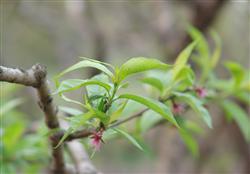The planting method of kumquat
Everyone must have eaten small oranges, although they are called small oranges, but their taste is completely different from that of oranges, and their growth patterns are also different from those of orange trees. The pericarp of kumquat can be eaten directly and has a certain medicinal value, but now its market price is only increasing, so it is a promising planting project. So how to grow this kind of kumquat? Today, the editor brought the method of growing kumquat. Let's have a look.

1. Select superior species
When choosing the seeds to be planted, you should choose the seeds that are disease-free and high yield. you can also take the seeds in the fruit and wash the liquid on the seeds. Dry and fleshless seeds are eliminated, air-dried and then sown. If they are not sown immediately, they should be stored in sand, piled up and placed in a dry and permeable place. This can not only prevent diseases, but also prevent the loss of seed germination power.
2. Land selection and preparation
The choice of orchard construction site should be in the plain or hills, requiring fertile soil, deep and loose soil layer, strong permeability soil. If the soil layer is barren and not suitable for planting, try to ensure that the surrounding traffic is more convenient, which is conducive to fruit transport after maturity, as well as the increase of seedlings. The soil needs to be ploughed once before sowing and ploughed again in the spring of the following year, at a depth of no less than one meter. A good field bed is built for easy management.
3. Sowing seeds at the right time
Spring is the best time to sow kumquat, but it can also be sown in November, and the sowing density should not be too dense according to the area of the orchard. Apply sufficient base fertilizer, at least 15 kg of fully mature farm manure in each ditch. Then sow, cover the fodder and cover the straw in order to prevent water loss and drought in the field. Seeds should be pseudo-planted after emergence and long leaves, and if not, the density should be increased appropriately.
4. Field management
After sowing, the seedlings should be watered frequently when they are not unearthed, to ensure the moisture needed for the seedlings to be unearthed, and to loosen the soil around the seeds to facilitate seed germination. The seedlings should be fertilized properly after they are unearthed, and be careful not to touch the leaves, otherwise the leaves will burn out. Before applying fertilizer, it is necessary to do a good job in the soil and remove weeds. In case of dry and hot weather, water should be watered in time to prevent fruit trees from growing powerless due to lack of water.
5. Orchard management
After emergence, the situation of seedlings should be observed in time, and if dead seedlings are found, they must be pulled out in time and then replenished. Some crops that need less fertilizer can be planted between rows, which can not only increase an additional source of income, but also be turned into the soil as kumquat fertilizer when it is ripe. In order to prevent kumquat from growing too strong, it is necessary to cut off the long branches in time and control the upright growth too high. It can not only facilitate the future harvest work, but also increase the output.
The above five points are a brief introduction to the cultivation of kumquat. One advantage of planting kumquat is that you do not have to worry about the occurrence of diseases, because there are basically no examples of diseases in such a long history. However, we should not take it lightly and do all the preparatory work to prevent emergencies and provide sufficient water and nutrients for the growth of kumquat. This is the end of today's introduction, for more information, please continue to follow the pro-agricultural network!
- Prev

Points for attention in planting lemon
Points for attention in planting lemon
- Next

How many ways to prune peach trees in summer?
How many ways to prune peach trees in summer? Please give an introduction to peach pruning in summer. There are mainly the following types for reference: 1. Smearing buds. The trunk, main branch shaping belt and main branch base within 15 cm of the sprout and the same main branch side, overlapping tender shoots, tender shoots timely wipe out or cut off, so as not to affect the growth of the trunk branch. 2....
Related
- Moge, come on! The staff of the peasant association in the producing area of cantaloupe were frightened when the crowd gathered.
- Causes and Solutions of low Fruit setting rate of Apple
- Symptoms and control measures of passion fruit virus disease
- Fruit growing lesson: how do apple orchards keep high yields?
- Can you build orchards in the mountains? What are the pros and cons?
- How to manage the coloring period of Crisson grape?
- This paper introduces the processing technology of two kinds of fig products.
- How much is a month for retired teachers in rural areas by 2020?
- How can strawberry planting increase sugar content? We should pay attention to management in many aspects.
- What are the cultivation techniques on how to improve the yield of golden fruit?

